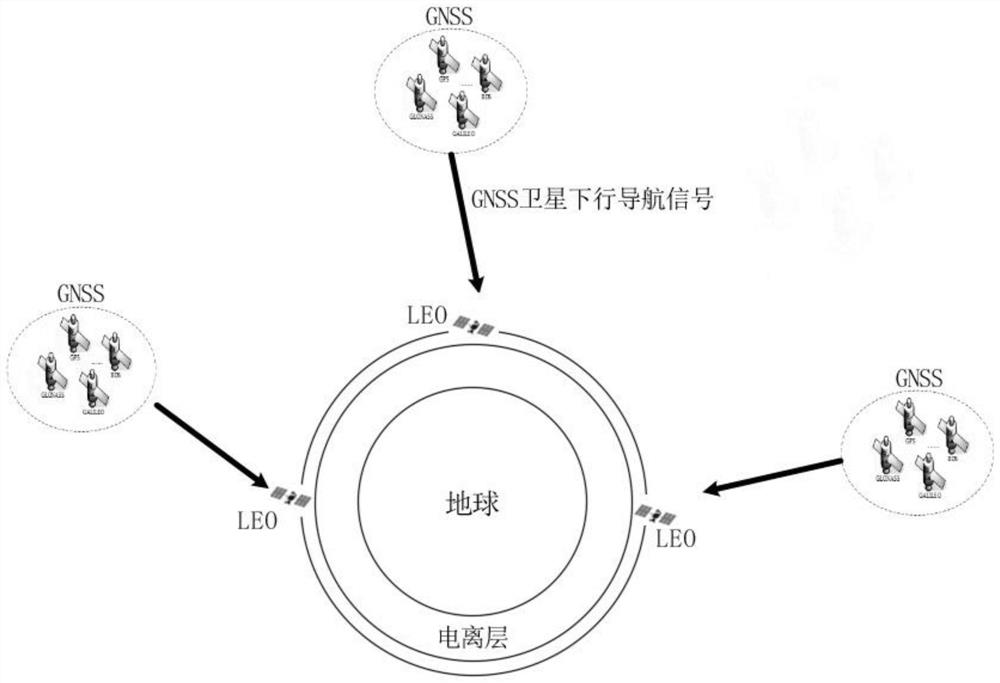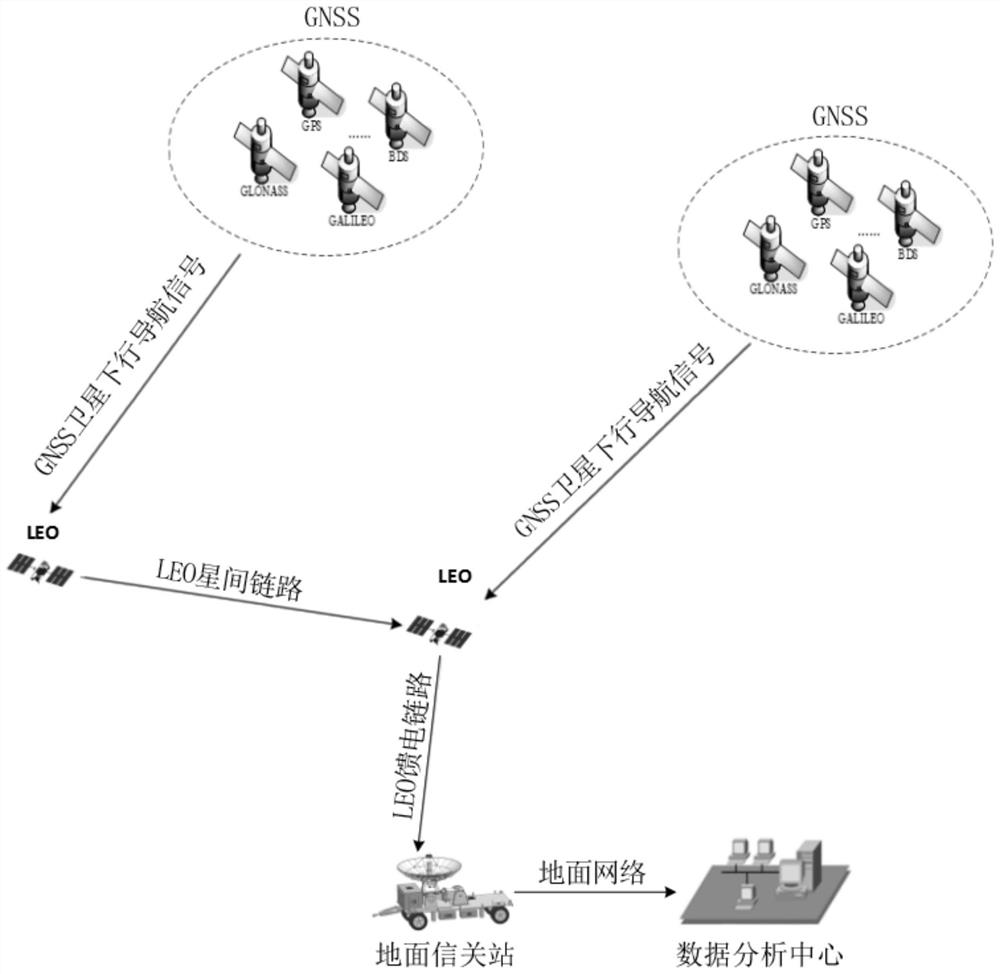Method and system for acquiring GNSS satellite inter-frequency deviation based on LEO
A technology of inter-frequency deviation and inter-frequency deviation, applied in the field of obtaining GNSS satellite inter-frequency deviation based on LEO, can solve the problems such as the difficulty of accurate quantification of the ionospheric model, the influence of the accuracy of the estimation of the inter-frequency deviation, and the complex ionospheric delay variation, etc. Achieve the effect of short observation time, strong real-time performance and fast movement speed
- Summary
- Abstract
- Description
- Claims
- Application Information
AI Technical Summary
Problems solved by technology
Method used
Image
Examples
Embodiment 1
[0065] In Example 1, a single LEO is used for observation and distance description. like Figure 4 shown, including the following steps:
[0066] Onboard GNSS receivers on a single LEO satellite above the ionosphere;
[0067] The spaceborne GNSS receiver stores observation information in real time, and the observation information includes receiver position, pseudorange, C0, GNSS satellite ephemeris, and elevation angle;
[0068] The ground gateway station downloads the stored observation information from the LEO satellite, and sends the observation information to the data center through the ground communication network;
[0069] Based on the observation information and combined with the least square method, the data center calculates the GNSS satellite inter-frequency bias and the GNSS receiver inter-frequency bias.
[0070] Preferably, the data center calculates and obtains the GNSS satellite inter-frequency deviation and the GNSS receiver inter-frequency deviation based o...
Embodiment 2
[0108] In Example 2, N LEOs are used for observation and distance description, where N is an integer greater than 1, such as Figure 5 shown, including the following steps:
[0109] A method for obtaining GNSS satellite inter-frequency deviation based on LEO, such as Figure 5 shown, including the following steps:
[0110] Each LEO satellite above the ionosphere is equipped with an on-board GNSS receiver;
[0111] Spaceborne GNSS receiver stores observation information in real time;
[0112] The overseas LEO satellites send the stored observation information to the domestic LEO satellites through the LEO inter-satellite link for summary to obtain the summary observation information;
[0113] The ground gateway station downloads the summary observation information from the LEO satellites in the territory, and sends the summary observation information to the data center through the ground communication network;
[0114] The data center calculates the inter-frequency deviatio...
PUM
 Login to View More
Login to View More Abstract
Description
Claims
Application Information
 Login to View More
Login to View More - R&D
- Intellectual Property
- Life Sciences
- Materials
- Tech Scout
- Unparalleled Data Quality
- Higher Quality Content
- 60% Fewer Hallucinations
Browse by: Latest US Patents, China's latest patents, Technical Efficacy Thesaurus, Application Domain, Technology Topic, Popular Technical Reports.
© 2025 PatSnap. All rights reserved.Legal|Privacy policy|Modern Slavery Act Transparency Statement|Sitemap|About US| Contact US: help@patsnap.com



